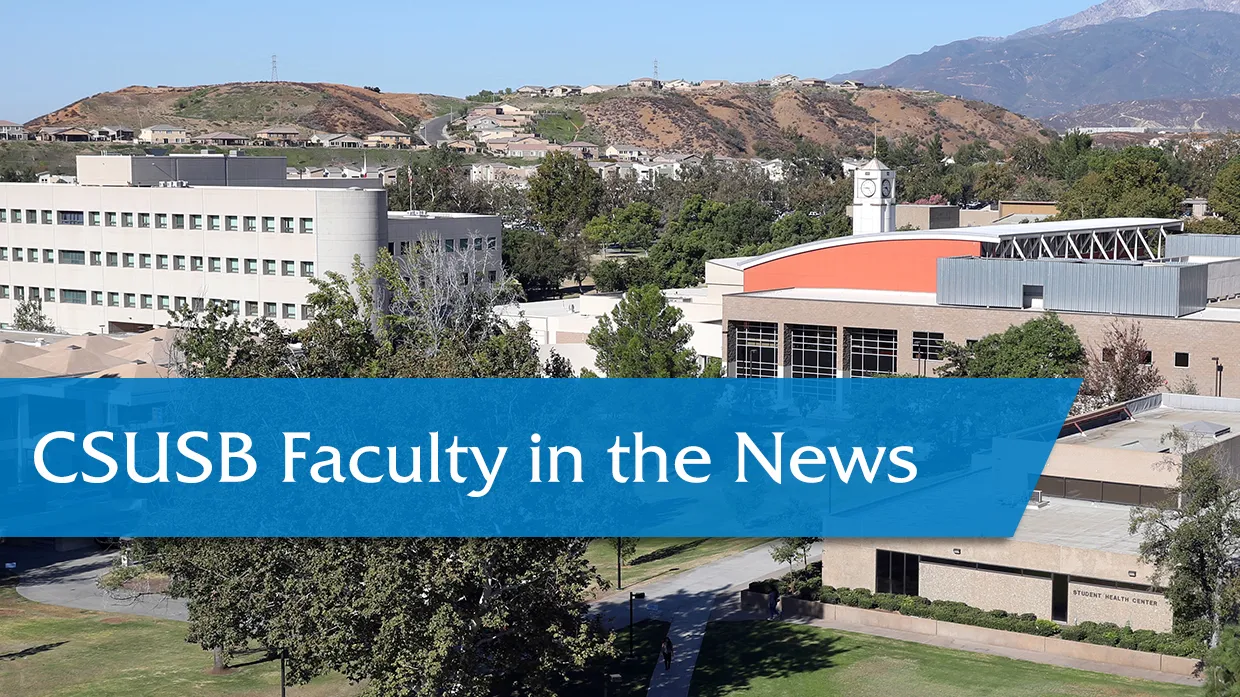NOTE: Faculty, if you are interviewed and quoted by news media, or if your work has been cited, and you have an online link to the article or video, please let us know. Contact us at news@csusb.edu
CSUSB professor discusses the psychology of retirement
Retire Eyes Wide Open
Dec. 4, 2019
Podcast host Scot Landborg invited Kenneth Shultz, professor of psychology at Cal State San Bernardino and author of the book, “Happy Retirement: The Psychology of Reinvention,” to discuss the mindset of retirement.
While many go into retirement focused on whether their finances will last them for potentially the next 30 to 40 years, Shultz said, “They don’t think about the psychological aspects of the subtitle of my book, ‘The Psychology of Reinvention’ – what am I going to do in terms of thinking about how I’m going to transition from whatever role I’m currently playing.”
The interview with Shultz begins about 18 minutes and 30 seconds into the program.
Listen to the podcast at “Ep#15: Psychology of retirement.”
CSUSB political science professor discusses the shrinking diversity of the Democrats’ 2020 presidential candidate field
FiveThirtyEight
Dec. 5, 2019
Meredith Conroy, a CSUSB associate professor political science and FiveThirtyEight contributor, participated in the website’s weekly politics chat, where the topic was how the field of Democratic presidential candidates for 2020 became “so white and male.”
U.S. Sen. Kamala Harris (D-California) dropped out of the race this week, and experienced politicians Julián Castro (Latino) and New Jersey U.S. Sen. Cory Booker (African American) have not gone above 4 percent in national polls, a level needed by Dec. 12 to participate in the party’s next debate, the website reported. Newcomer Andrew Yang (Asian American) “has come tantalizingly close to qualifying for the December debate,” Politico reported. U.S. Rep. Tulsi Gabbard (D-Hawaii), also is close to qualifying, according to Politico.
“If I had to give a blanket explanation for why the nonwhite candidates aren’t polling well among Democrats, my answer is that there was never going to be a lot of room between a former VP (Joe Biden) and former runner-up (Bernie Sanders),” Conroy said. “Beto O’Rourke, Elizabeth Warren, Harris and Pete Buttigieg all made inroads at some point, although only Warren’s has really been sustainable. Why Castro and Booker haven’t (yet) is, in my view, related to their race and the “electability” overcorrection following 2016, or this idea that only a white, moderate male can take on Trump at the ballot box. Because sexism and racism motivated voters’ choice at the ballot box in 2016, I think Democrats are reluctant to be all-in for a candidate that will make those attitudes more salient in 2020.”
Later in the conversation, she added: “Big picture, the lack of nonwhite front-runners signals to me that a vast number of voters are reluctant to support a nonwhite candidate because they are worried about winning swing states. For voters who are more concerned with policy than beating Trump, my thought is they have probably already settled on Sanders or Warren, which leaves a candidate like Castro — who also has a progressive agenda — out to dry. Long term, it should be a wake-up call for the Democratic party as an organization. They need to continue to build a diverse bench and do more to elevate nonwhite and non-male candidates.”
Read the full transcript of the chat at “How did the Democrats end up with a 2020 field so white and male?”
Stricter definitions of hate crimes needed to separate deliberately falsified reports from ambiguous events, CSUSB professor says
The Washington Post
Dec. 5, 2019
Brian Levin, director of Cal State San Bernardino’s Center for the Study of Hate and Extremism, was interviewed for an article about the rise in reported hate crimes across the United States over the past several years. The topic has been accompanied by the revival of a polarizing debate: How many of those crimes are real?
The arguments of some conservative commentators that most or all of those incidents are fake have grown louder, especially since President Trump’s 2016 election.
Wilfred Reilly, a political scientist at Kentucky State University and author of “Hate Crime Hoax: How the Left is Selling a Fake Race War,” believes that fewer than 2 out of 10 reported hate crimes are fabricated. Where academics disagree is on just how many hoaxes take place.
Reilly estimates that as much as 15 percent of the hate crimes reported to the Federal Bureau of Investigation are falsified. Levin puts the hoax rate much lower, at less than half of 1 percent.
What accounts for the difference? Levin and Reilly diverge on what should be classified as a hoax. Levin, a criminologist, counts hate crimes that are reported to authorities — such as the police or college campus officials — and later are shown to be deliberately falsified.
Reilly casts a wider net, including in his database various noncriminal incidents that initially generated speculation about hateful motives.
Levin said a stricter definition is needed to separate deliberately falsified reports of hate crimes from more ambiguous events.
“A hate crime is more than a folkloric, cultural label,” he said. “It’s actually a legal and statutory one as well. And that’s the one that I study.”
Read the complete article at “Are hate crime hoaxes on the rise along with real hate crimes?”
These news clips and others may be found at “In the Headlines” at inside.csusb.edu.
